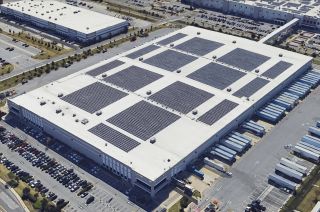
www.buildingsandcities.org/insights/commentaries/social-value-architect.html
Social Value: An Architect's Perspective

How can research assist architects & others to substantiate the intended social benefits in an architectural project?
Edward Ng (Chinese University of Hong Kong) provides an architect's perspective on the Buildings & Cities special issue 'Social Value of the Built Environment'.
Social value is a topical issue for architects in the UK and other developed countries. The UK's Public Services (Social Value) Act 2012 has generated recent attention on this topic. However, the lineage of the concept goes back to 1919 when MP Robert Munro spoke in the UK's House of Commons of the 'social value' that good housing creates for workers and which 'release the springs of industry' (White, 2022). This reflects exactly what I have been trying to do in the last 20 years as a practicing architect and professor of architecture: building houses to create capabilities beyond merely living (1U1V, 2023). My limited experience working towards creating social value can be summarized as: (a) a co-creation process with stakeholders and (b) providing a long-term perspective. The rest is technical.
This special issue edited by Flora Samuel and Kelly Watson examines the concept of social value in a more academic manner. From the need to define the concept more precisely to the advancement of the evaluation methods, the different perspectives in the special issue have elaborated the concept for architects. This diversity of views is a good indication that this subject is an emerging one: more research and discussion are needed. More importantly, it confirms that a multi-disciplinary approach is necessary. That is to say, architects need to learn from and involve other disciplines when developing projects.
A difficult issue that arises in an architectural project is: how can the various intended social benefits be substantiated and quantified? Building a house that the villagers can live in comfortably is easy to prove. Assessing the socio-economic and cultural benefits is significantly more difficult. A user survey of the villagers will yield polite and short-term responses, but these may not articulate the social value. Therefore, developing robust methodologies and protocols will be extremely important. A range of methodologies will be required - as stipulated by some of the authors in the special issue - to ensure that assessment is context based. There is no one kind of need and one type of user. In my own architectural projects, we don't abandon the villagers after co-creating their homes, our involvement and social intervention continues afterwards. Therefore, new methodologies must take the long-term perspective into account.
The two articles in the special issue, by Barrie et al. (2023) and Croffi et al. (2023) on high-density mixed-use projects are of particular interest. This kind of project is familiar to people living in Hong Kong as most developments are high-density and mixed-use. As many cities continue to expand and densify, the question of how to design high-density mixed-use projects for a better social future is important for many architects. Mixed-use building has the benefit of bringing essential facilities close to inhabitants. For an ageing society, the mobility of some older people is limited. Hence,high-density mixed-use has the potential to provide social value to its ageing users.
Barrie et al. (2023) consider a single block mid-rise building in Adelaide, AU. The robust methodology employed concepts of active environment, wellbeing and place-making which allowed the assessment to be more objective. Apart from how the building itself may create added value, an important lesson is to extend the assessment boundary to the site context. This acknowledges the difficulty (if not the impossibility) for a simple building to address many values treasured by the users, e.g. generational integration or civic support provisions. In addition, it is useful to ascertain how the building creates social value for users who don't live in the building. It is vital for buildings to work collectively to ensure mutual benefits are created: planners, developers, architects and other professionals have a social responsibility to create the appropriate spaces and functions.
Croffi et al. (2023) focus on environmental performance. Its abstract is controversial as this topic has not been the case in many high-density cities. The term wellbeing has been used to guide the study. A good definition of wellbeing is provided by WELL v2 (WELL, 2020) by the International WELL Building Institute (IWBI). Only a few of the principles of the WELL Standard were used by the authors, and the study concentrated on the indoor environment. Some of the quantifiable parameters, (e.g. thermal comfort) were identified. The article reports some details of the user surveys. However, if the users' perceptions and responses are correlated with the actual physical conditions of environment, then on-site quantitative environmental measurements are required. It is a pity that the article does not provide further technical details and measurements. As such, establishing thresholds or achievements is impossible; and assessing benefits is not attainable. The next goal should be substantiating the framework with critical data analytics.
As a practicing architect, I have benefitted from studies that are project based. The RIBA Social Value Toolkit for Architecture (2020) has provided us a few starters. However, nothing is easier to learn than case studies. As Dean Hawkes paraphrased Leslie Martin:
Theory is the body of principles which explains and interrelates all the facts of a discipline. Critical practice is the tool by which theory is advanced. Without theory and critical practice, teaching can have no direction and thought no cutting edge.
Researchers provide a useful role by providing independent, robust analyses which practitioners and policymakers can learn from. I would welcome the publication of more social value case studies in subsequent issues.
Like Samuel and Watson (2023), I am very interested to ponder what could be next, and more importantly, for whom and how. Methodologies and technicalities are obviously further areas of investigation. Samuel and Watson have identified that climate change adaptation should be considered as part of social value. Ethics and motivation could also be investigated. Addressing the question of why we should be bothered may lead to clarity on how we may wish to progress. Motivation is always the most powerful force. For me, the smiles, friendship and feedback of the villagers whom we have helped 10 years ago has provided the spiritual support for our long-term effort.
References
1U1V (2023). One University One Village www.1u1v.org
Barrie, H., McDougall, K., Miller, K. & Faulkner, D. (2023). The social value of public spaces in mixed-use high-rise buildings. Buildings and Cities, 4(1), 669-689. https://doi.org/10.5334/bc.339
Croffi, J., Kroll, D., Soebarto, V., Barrie, H. & McDougall, K. (2023). Wellbeing fostered by design: a framework for evaluating indoor environment performance. Buildings and Cities, 4(1), 507-523. https://doi.org/10.5334/bc.336
RIBA (2020). Social Value Toolkit for Architecture. London: RIBA Publication.
Samuel, F. & Watson, K. (2023). Social value of the built environment. Buildings and Cities, 4(1), pp. 938-947. https://doi.org/10.5334/bc.399
WELL (2020). https://v2.wellcertified.com/en/wellv2/overview/
White, C. (2022). Social value 2032: shaping the future of social value. Social Enterprise UK. https://www.socialenterprise.org.uk/app/uploads/2022/05/Social-Value-2032-Creating-a-Social-Value-Economy-compressed.pdf
Latest Peer-Reviewed Journal Content
Acceptability of sufficiency consumption policies by Finnish households
E Nuorivaara & S Ahvenharju
Key factors for revitalising heritage buildings through adaptive reuse
É Savoie, J P Sapinski & A-M Laroche
Cooler streets for a cycleable city: assessing policy alignment
C Tang & J Bush
Understanding the embodied carbon credentials of modern methods of construction
R O'Hegarty, A McCarthy, J O'Hagan, T Thanapornpakornsin, S Raffoul & O Kinnane
The changing typology of urban apartment buildings in Aurinkolahti
S Meriläinen & A Tervo
Embodied climate impacts in urban development: a neighbourhood case study
S Sjökvist, N Francart, M Balouktsi & H Birgisdottir
Environmental effects of urban wind energy harvesting: a review
I Tsionas, M laguno-Munitxa & A Stephan
Office environment and employee differences by company health management certification
S Arata, M Sugiuchi, T Ikaga, Y Shiraishi, T Hayashi, S Ando & S Kawakubo
Spatiotemporal evaluation of embodied carbon in urban residential development
I Talvitie, A Amiri & S Junnila
Energy sufficiency in buildings and cities: current research, future directions [editorial]
M Sahakian, T Fawcett & S Darby
Sufficiency, consumption patterns and limits: a survey of French households
J Bouillet & C Grandclément
Health inequalities and indoor environments: research challenges and priorities [editorial]
M Ucci & A Mavrogianni
Operationalising energy sufficiency for low-carbon built environments in urbanising India
A B Lall & G Sethi
Promoting practices of sufficiency: reprogramming resource-intensive material arrangements
T H Christensen, L K Aagaard, A K Juvik, C Samson & K Gram-Hanssen
Culture change in the UK construction industry: an anthropological perspective
I Tellam
Are people willing to share living space? Household preferences in Finland
E Ruokamo, E Kylkilahti, M Lettenmeier & A Toppinen
Towards urban LCA: examining densification alternatives for a residential neighbourhood
M Moisio, E Salmio, T Kaasalainen, S Huuhka, A Räsänen, J Lahdensivu, M Leppänen & P Kuula
A population-level framework to estimate unequal exposure to indoor heat and air pollution
R Cole, C H Simpson, L Ferguson, P Symonds, J Taylor, C Heaviside, P Murage, H L Macintyre, S Hajat, A Mavrogianni & M Davies
Finnish glazed balconies: residents' experience, wellbeing and use
L Jegard, R Castaño-Rosa, S Kilpeläinen & S Pelsmakers
Modelling Nigerian residential dwellings: bottom-up approach and scenario analysis
C C Nwagwu, S Akin & E G Hertwich
Mapping municipal land policies: applications of flexible zoning for densification
V Götze, J-D Gerber & M Jehling
Energy sufficiency and recognition justice: a study of household consumption
A Guilbert
Linking housing, socio-demographic, environmental and mental health data at scale
P Symonds, C H Simpson, G Petrou, L Ferguson, A Mavrogianni & M Davies
Measuring health inequities due to housing characteristics
K Govertsen & M Kane
Provide or prevent? Exploring sufficiency imaginaries within Danish systems of provision
L K Aagaard & T H Christensen
Imagining sufficiency through collective changes as satisfiers
O Moynat & M Sahakian
US urban land-use reform: a strategy for energy sufficiency
Z M Subin, J Lombardi, R Muralidharan, J Korn, J Malik, T Pullen, M Wei & T Hong
Mapping supply chains for energy retrofit
F Wade & Y Han
Operationalising building-related energy sufficiency measures in SMEs
I Fouiteh, J D Cabrera Santelices, A Susini & M K Patel
Promoting neighbourhood sharing: infrastructures of convenience and community
A Huber, H Heinrichs & M Jaeger-Erben
New insights into thermal comfort sufficiency in dwellings
G van Moeseke, D de Grave, A Anciaux, J Sobczak & G Wallenborn
'Rightsize': a housing design game for spatial and energy sufficiency
P Graham, P Nourian, E Warwick & M Gath-Morad
Implementing housing policies for a sufficient lifestyle
M Bagheri, L Roth, L Siebke, C Rohde & H-J Linke
The jobs of climate adaptation
T Denham, L Rickards & O Ajulo
Structural barriers to sufficiency: the contribution of research on elites
M Koch, K Emilsson, J Lee & H Johansson
Disrupting the imaginaries of urban action to deliver just adaptation [editorial]
V Castán-Broto, M Olazabal & G Ziervogel
Nature for resilience reconfigured: global- to-local translation of frames in Africa
K Rochell, H Bulkeley & H Runhaar
How hegemonic discourses of sustainability influence urban climate action
V Castán Broto, L Westman & P Huang
Fabric first: is it still the right approach?
N Eyre, T Fawcett, M Topouzi, G Killip, T Oreszczyn, K Jenkinson & J Rosenow
Social value of the built environment [editorial]
F Samuel & K Watson
Understanding demolition [editorial]
S Huuhka
Data politics in the built environment [editorial]
A Karvonen & T Hargreaves



Latest Commentaries
Decolonising Cities: The Role of Street Naming
During colonialisation, street names were drawn from historical and societal contexts of the colonisers. Street nomenclature deployed by colonial administrators has a role in legitimising historical narratives and decentring local languages, cultures and heritage. Buyana Kareem examines street renaming as an important element of decolonisation.
Integrating Nature into Cities
Increasing vegetation and green and blue spaces in cities can support both climate change mitigation and adaptation goals, while also enhancing biodiversity and ecological health. Maibritt Pedersen Zari (Auckland University of Technology) explains why nature-based solutions (NbS) must be a vital part of urban planning and design.